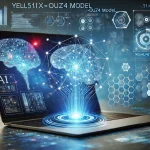When you prepare multiple page documents for print you need to know about the collate option. People ask the true definition of this word regularly. Learning about the collate setting lets you save work during printing preparation. We will explore what “collate” means and how it helps printing operations work better.
What Does Collate Mean?
Printing collate puts together the pages of a multiple-page document so every copy has its pages in the right order. Printers deliver complete document order sets when you configure collate during batch printing. For example:
Collated Printing (ON):
- Copy 1: Page 1, Page 2, Page 3
- Copy 2: Page 1, Page 2, Page 3
- Copy 3: Page 1, Page 2, Page 3
Non-Collated Printing (OFF):
- All copies of Page 1 (Page 1, Page 1, Page 1)
- All copies of Page 2 (Page 2, Page 2, Page 2)
- All copies of Page 3 (Page 3, Page 3, Page 3)
When Should You Use Collate?
Collating is particularly useful in situations where:
- Organized Documents are Needed: If you’re printing materials like reports, presentations, or booklets, collating ensures that each copy is ready to distribute without additional sorting.
- Time is Limited: With collate enabled, you save time by eliminating the need to manually arrange pages into the correct order.
However, if you’re printing single-page documents or plan to assemble the pages manually for a specific purpose (e.g., inserting dividers or binding), you may choose to disable collating.
How to Enable or Disable Collate
Most printers and printing software make it easy to toggle the collate option. Here’s how you can do it:
Windows:
- Open the document you want to print.
- Go to the Print menu (usually under File > Print).
- In the print dialog box, look for the “Collate” checkbox or dropdown menu.
- Select “Collate” to enable it or deselect it to disable.
Mac:
- Open the document and go to File > Print.
- In the print dialog box, find the “Collated” option (often in the Copies section).
- Check or uncheck the box based on your preference.
On Printer Panels:
- Some advanced printers allow you to set collate options directly from their control panels. Check your printer’s manual for instructions.
Benefits of Collating
- Convenience: Automatically organizes multi-page documents.
- Efficiency: Reduces the time spent manually sorting pages.
- Professional Results: Ensures consistency and organization in printed materials.
- Reduced Errors: With collate enabled, there’s less chance of distributing incomplete or out-of-order documents, which is especially critical in professional settings.
Common Scenarios for Collate
- Office Reports: Multiple sets of reports for meetings.
- Classroom Handouts: Complete packets for students.
- Booklets: Ready-to-staple or bind documents.
- Proposals: Professional-looking proposals for clients or stakeholders.
- Manuals and Guides: Well-organized instruction manuals or training guides.
Additional Tips for Printing with Collate
- Check Your Printer’s Capabilities: If your printer was made before automatic collating features or works with fewer functions you need to set pages in order yourself.
- Preview Before Printing: Use the print preview function to check printing order before starting because large documents require special handling.
- Double-Sided Printing: Your documents will stay correctly ordered because double-sided printing (duplex printing) works together with collating.
- Save Printer Settings: When you print multiple pages regularly make your preferred settings like collation work standard for smoother future tasks
- .
Conclusion
The easy-to-use Collate tool makes it faster to print several page documents. Learning when and how to use the collate feature helps you save valuable time no matter your printing needs. When you print next try thinking about if your project needs collating because it makes your work easier. Using Collate properly helps you work more efficiently while keeping your documents better arranged and looking professional.










